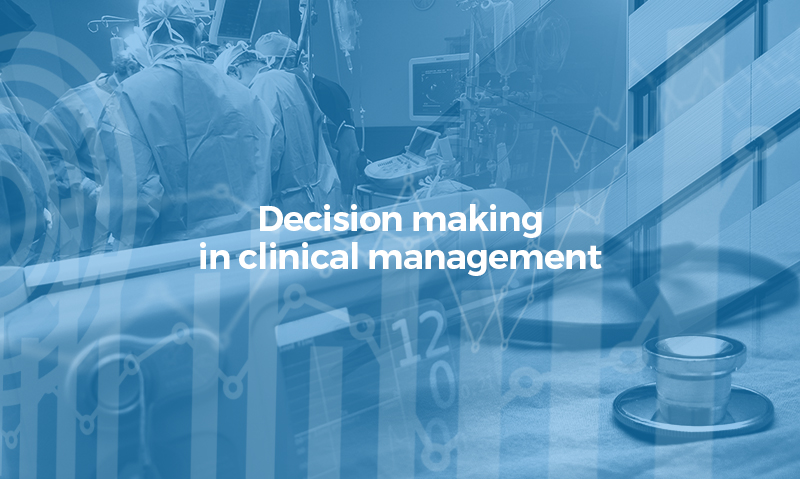Decision making has been transformed by the technological revolution of recent years. We tell you how it can be applied in clinical management.
Decision-making is one of the elements of business that has undergone the most significant changes with the data revolution of recent years. With big data and business intelligence, data and information allow the basis for decision making to be much more solid, so risks can be reduced and the room for change is greater.

In clinical management, data-driven decision making offers countless possibilities, from better control of available beds to monitoring the mortality rate or reducing waiting times for surgery, among others. In addition, the technology implemented in the clinical field can not only be used for better decision making, but also to discover patterns in discharge data and thus find a way to reduce hospital exits, for example.
At Bismart, we offer solutions that provide a better basis for making intelligent decisions, taking into account reliable and verifiable factual information. We have developed our solutions in many sectors, including clinical management. Specifically, in this area we are developing projects for several reference hospitals in Spain for which we have created a tool that integrates with existing hospital systems and facilitates the transformation of information into knowledge for the professional in an agile way, with information practically in real time and accessible from any type of terminal.
Optimization of decision making in clinical management
Let us take as an example one of the projects carried out. This hospital had several objectives:
Firstly, there was a need to unify and consolidate the hospital's multiple data sources by creating a corporate data warehouse that would guarantee single, quality data.
A series of processes of cleaning, elimination of duplicates and normalization of the database were carried out with the aim of improving the quality of the data to be consulted.
We looked for a way to visualize the data available in a clear and global way, so that decisions could be made based on them. To this end, it was decided to establish a Power BI reporting system with assistance dashboards and reporting services for those reports that had to be distributed in a listed format, in addition to a series of alarms that were automatically sent to those responsible when a KPI provided anomalous results.
One of the main reasons why it was decided to invest in an improved decision-making process was the need to reduce waiting time. With the implementation of the solution, it has been possible to provide the necessary information for the hospital team to optimize the use of operating rooms, staff allocation and reduce waiting time, which has resulted in a direct benefit for the user.
Overall, Bismart has offered them an integral solution that allows a complete vision of healthcare activity, a predictive of functioning beds, trend analysis, the management of the surgical waiting list and the possibility of knowing the hospital supply and demand, among others. Our solution has allowed them to generate knowledge from the visualization of the information and data they already had. With this, the hospital has been able to detect inefficiencies and modify processes.
In order to develop this project, two data sources have been taken into account: the electronic medical record and the hospital's departmental applications. The data was extracted, transformed and loaded into a data warehouse in order to define the analysis services. Finally, a visual environment has been generated for the distribution of reports and data.
On the one hand, a Power BI environment has been created with dashboards with the most traditional indicators of care management: discharges, re-entries, use of operating rooms... This offers a global view of what is happening in the hospital. On the other hand, a series of additional visualizations have been generated with a results-oriented approach. This type of reporting uses patient activity data to improve hospital process management, assessing the effectiveness of existing processes and helping to define patterns and workflows that result in better patient service. This contributes to changes in both clinical and patient care processes.
In addition, the availability of this information has been used to reinforce research work, such as cohort studies, research on health outcomes for health decision-making or longitudinal studies.
Projects like this one show the transversality of decision making and how its improvement has repercussions in many areas within a corporation. Today it is crucial that a company invests resources in optimizing its decision-making to maintain its competitiveness.


